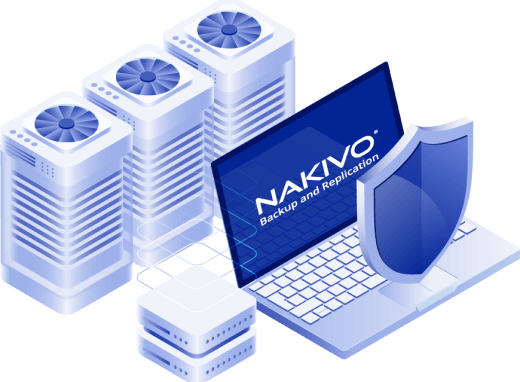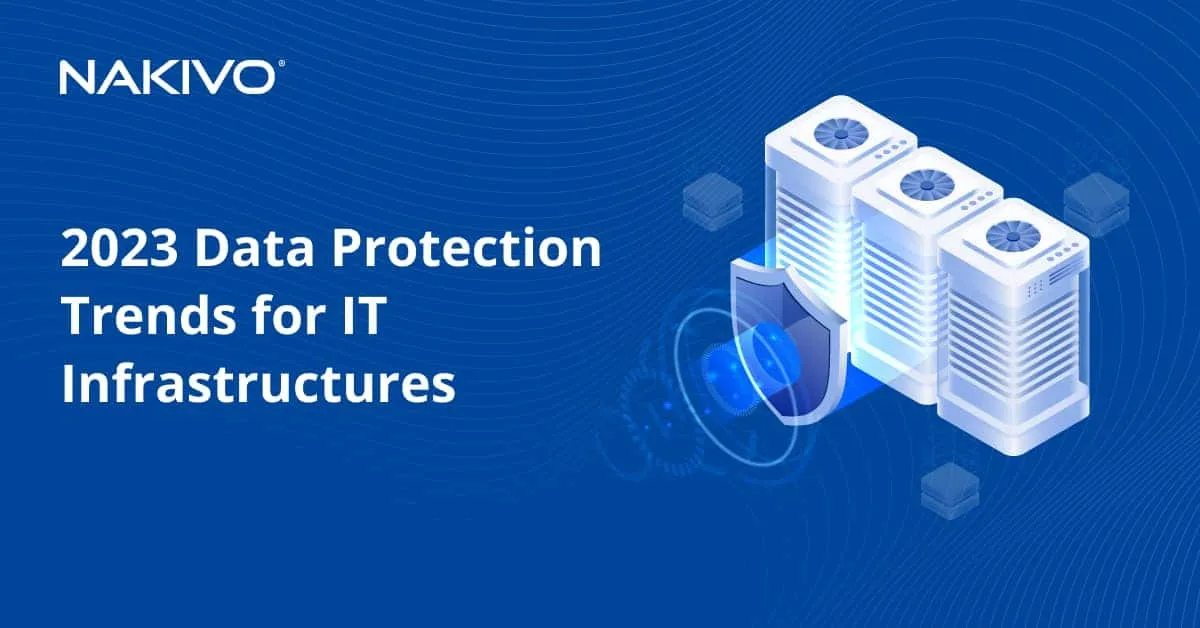Private Cloud vs Public Cloud for Backups: Choosing the Right Platform for Your Business
In recent years, storing data in the cloud has proven reliable and efficient prompting most businesses to choose this type of storage. IT best practices generally recommend storing one copy of data backups in the cloud to ensure data availability and security. However, when sending your backups to cloud storage, the choice between private cloud vs public cloud can be a challenge.
In this post, we briefly explain what public and private clouds are and their key differences. Read on to discover some recommendations that can help you make the right choice for your organization.
Understanding Cloud Storage: Private vs Public Cloud
For starters, let’s review private and public clouds in general. This can help in evaluating the key features of every solution. By learning the specifics, you can make the decision that best suits your requirements and budget.
What is a Public Cloud?
A public cloud is what comes to mind in most cases when you hear the word “cloud”. Public clouds are ready-made infrastructures built, hosted and managed by public cloud vendors. The “big three” of public cloud vendors include Amazon Web Services (AWS), Microsoft Azure and Google Cloud Platform (GCP). Together, they control 65% of the cloud market share.
Public clouds normally rely on the vendor’s infrastructure that multiple tenants rent on demand. The IaaS (infrastructure-as-a-service) approach has multiple benefits and drawbacks, meaning that every use case should be evaluated separately.
A normal public cloud is the preferred storage for an organization’s archive or backup data. Moving these records to the public cloud enables organizations to support data availability and use their internal storage space for production purposes. This allows businesses to provide faster services to a larger user base across the globe without investing in on-premises hardware every time they need to scale.
What is a Private Cloud?
A private cloud (also known as a data center) is the cloud that an organization uses to build a dedicated hardware infrastructure designed specifically for the company’s purposes and requirements without sharing the space with other tenants.
Enterprise-level organizations normally have their own on-premise environments and can afford to assemble and rent a data center to use as a private cloud. Such investments can be more profitable when compared to public clouds of the same volume and performance. On the other hand, maintenance, management, upgrades and hardware replacement add costs to the system’s TCO.
Differences Between Public and Private Cloud Technologies for Backups
A detailed look at the differences between private and public cloud technologies for backup purposes can help you make the right choice. Below we focus on the key features of the two technologies.
Infrastructure
Public cloud infrastructures typically rely on a vendor’s shared hardware and storage. An organization sending backup data to the public cloud is a tenant that rents access to the storage and infrastructure. The vendor maintains, monitors and keeps that infrastructure available, offloading operational efforts from the tenants’ IT experts.
On the other hand, a private cloud infrastructure supposes dedicating an environment to a single organization, which increases the cost. In return, the organization controls every element of the system, can flexibly adjust the infrastructure to its evolving needs and ensures customized data access rules.
Security
Modern public cloud providers focus on data security measures both during transmission (in flight) and throughout the retention period (at rest). To operate and serve clients globally, the vendor must adjust security measures to compliance requirements in every jurisdiction. The caveat is that the security approach is generalized and tenants can have limited or no opportunity to customize cloud security the way they see fit.
Private cloud providers pay more attention to their client’s requirements, adding more flexibility and capabilities compared to public clouds. Although this can generate additional expenses, you can build more efficient multi-layered protection systems for your backups in private clouds.
Costs
A public cloud can offer reasonable storage space prices, which is particularly important for SMBs with limited budgets. In this case, prices may vary depending on the storage tier:
- Faster and highly available storage is more expensive yet enables quick recovery or running critical workloads directly from the cloud.
- Slower storage at lower costs suits data archival needs: organizations can store the rarely required data at a reasonable price without overinvesting in local storage disks.
Building or renting a private cloud space to run backup and recovery workflows requires significant funds invested within a short time. This, combined with the resources and effort needed to maintain private data centers, makes the task more challenging. The price for private cloud storage is generally higher because you pay for dedicated infrastructure and storage. However, no other tenant has access to the same data location, which brings the available hardware resources to your disposal whenever required.
Performance and reliability
Public clouds carry multi-tenant loads, which leads to higher latency and decreased performance of large workloads. Issues can become more significant in case of improper network management. Moreover, a public cloud means dependence on external network connections that an organization may be unable to control. On the other hand, providers here can support the high availability of client data due to multiple data centers located at different points globally.
A private cloud enables in-depth customization to reduce latency and enhance performance to the level that an organization needs. This choice also allows businesses to utilize the available hardware and network resources as they require. Lastly, they can predict scaling and upgrades, ensuring stable production and sufficient storage.
Control and customization
Public clouds provide limited control and customization capabilities. The only parameters you can flexibly manage here are the available storage volume, tiers and features included in the preset subscription models. The main benefit of public clouds is that you can increase and decrease the available volumes to adjust your service bills and avoid overpaying for unnecessary storage.
Private cloud control and customization capabilities are wider, which is usually why organizations prefer them over public cloud vendors. However, not every private cloud provider can meet the requirements of every client. The level of flexibility and control for an organization may vary depending on the provider’s capabilities.
Compliance and regulatory requirements
Both private and public cloud vendors care about compliance as much as they care about data security and privacy, adhering to HIPAA, GDPR and PCI DSS, among other regulations. That said, ensuring compliance can be challenging since it requires regular audits and assessments. To solve arising issues and comply with the regulations, organizations can create specialized compliance teams or hire outsourced services.
Choosing the Right Cloud Solution for Your Business
The specifics of your organization’s infrastructure, requirements and budgets are crucial when deciding between public and private cloud. Let’s focus on the key factors you might want to consider before making the final choice.
Business size and type
In case your organization is an SMB, the capabilities of a public cloud are most likely sufficient for your backup and recovery needs. Small organizations usually have moderate backup storage and network bandwidth requirements that public clouds can effectively meet.
Enterprise organizations might want to cut backup windows and accelerate recovery processes in emergency cases as much as possible. In this case, the right private cloud solutions can provide additional control over the available network bandwidth and improve the overall data transfer performance.
Budget constraints
The available budget remains the cornerstone of IT decisions, and, in most cases, public clouds win the cost-efficiency contest. Organizations can invest moderate funds and get highly available public cloud storage that they can instantly use. Most vendors charge per gigabyte which means you can flexibly manage expenses by reducing and increasing the storage volume.
Enterprises with ramified and complicated infrastructures can have dozens of terabytes of data to back up and recover. Additional requirements can make the extended control and management capabilities of private clouds worth the price difference.
Security and compliance requirements
The security of both public and private clouds is sufficient for ensuring reliable data protection and regulatory compliance. In general, public cloud providers successfully keep up with the latest cybersecurity trends and legislative changes. However, if you need to customize security systems and gain more control of your backup data, private clouds are the preferred choice.
Technical requirements and expertise
The efficient backup and recovery of your organization’s data depend on your computing resources, solution capabilities and IT expertise. Choosing a private cloud can be suitable for organizations that have complex IT environments and backups requiring fine-tuning. However, the IT team should be qualified to deploy and effectively manage the cloud infrastructure.
Public clouds are more straightforward and require fewer resources. Since most IT management tasks are at the vendor’s side, the organization only manages the data. Extensive in-house cloud management skills are not necessary in this case.
Conclusion
The difference between public and private clouds necessitates a thorough evaluation of the specifics of both technologies before making a final choice. When choosing between the two storage types for backups, consider the overall data volume and variety, security needs and experience of the IT team.
Public clouds are more affordable and easier to use in exchange for additional latency, storage sharing with other tenants and lack of customization. Private clouds require higher management skills and bigger investments, providing you with dedicated storage and advanced control of performance, security and data flow.




